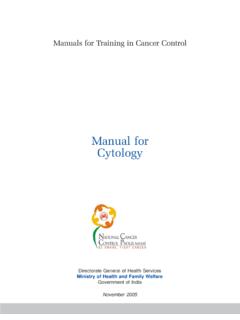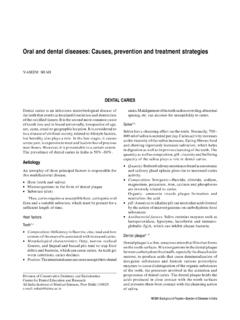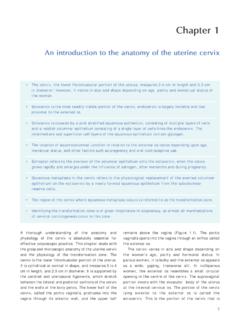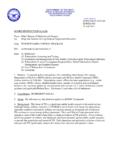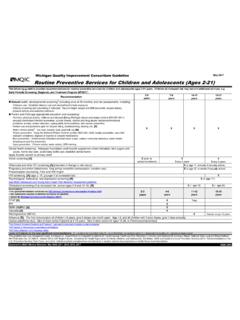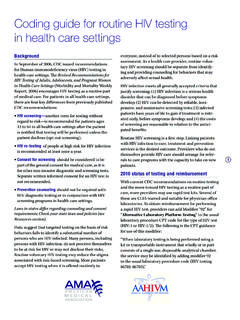Transcription of Manual for Cytology - IARC Screening Group …
1 Manual forCytologyManuals for Training in Cancer ControlDirectorate General of Health ServicesMinistry of Health and Family WelfareGovernment of IndiaNovember of Diagnostic and Preparation10of Material for techniques24of Serous of Cytology methods in Cytology30-Appendix:Organisation of36 Cytopathology LaboratoryMinimum requirements for40setting up a small Cytology Laboratory45 FOREWORDI ndia is one of the few countries in the world to have a National Cancer Control programme was conceived with the objectives of providing preventive and curativeservices through public education and enhancement of treatment have been able to develop 23 Regional Cancer Centres and several Oncology Wingsin India, which provide comprehensive cancer care services.
2 One of the major limitationsof the programme is the late stage at presentation of common cancers thus reducing thechances of survival. There is a need to increase awareness among the community regardingprevention and early detection of cancers. The programme is developing IEC materialsfor the same. Once the population is armed with the necessary information, it is expectedthat the health system should be geared to tackle the increased demand for care. Therehave to be trained health care professionals to support the needs of the community.
3 Thiscan be addressed by proper training and sensitisation of general practitioners and healthcare manuals are developed for training health professionals and specific modules havebeen prepared for Cytology , Palliative care and Tobacco cessation. The facilitator s manualwill assist the trainers to conduct the programmes. The manuals are self-explanatory andthe health professionals will be able to use them on their own.(S. P. AGARWAL)Dr. S. P. AGARWALM. S. (Surg.) M. Ch. (Neuro)DIRECTOR GENERALGOVERNMENT OF INDIADIRECTORATE GENERAL OF HEALTH SERVICESNIRMAN BHAVAN, NEW DELHI - 110011 TEL.
4 NO. 23018438, 23019063 FAX NO. 91-11-23017924 Dated: 13th September, 2005 Hkkjr ljdkjLokLF; lsok egkfuns kky; Hkou] u fnYyh & 11001167 PREFACED emographic and epidemiological transitions and changes in lifestyle are leading to theemergence of cancer and other chronic diseases as public health problems in India. Cancerpattern in India reveals the predominance of tobacco related cancers, which are amenableto primary prevention. Cancer Registries in different parts of the country reveal that majorityof cancer cases present in an advanced stage and makes treatment options prolonged andexpensive.
5 Therefore, the National Cancer Control Programme has placed its emphasis onprevention, early detection, enhancement of therapy facilities and provision of pain andpalliative care. Comprehensive legislation on tobacco by the Government of India will helpto control the tobacco related cancers. The programme has been able to augment thetreatment capacity and to address the geographical gaps in cancer care services. Awarenessand early detection programmes are undertaken through District Cancer care personnel have a major role in providing awareness, promoting early detection,prompt referral to a cancer treatment facility and in providing pain relief and palliative knowledge and skills in the above areas have to be enhanced and these manuals havebeen developed in response to this need.
6 This set of manuals, which consists of a facilitators Manual and separate manuals for health professionals, Cytology , tobacco cessation andpalliative care, is an attempt at providing the minimum required capacity. The manuals areself explanatory and will help the trainers, who will be from Regional Cancer Centres andother cancer treatment manuals and the compact disc will be widely disseminated and same will be availableon the website of the Ministry of Health and Welfare. The National Cancer Control Programmewill urge that these may be used in cancer control training programmes in various RAAMAMOORTHYJ oint SecretaryTele: 23061706 Fax: 23061398E-mail: OF INDIAMINISTRY OF HEALTH & FAMILY WELFARENIRMAN BHAVAN, NEW DELHI - 11001189 Role of Diagnostic CytologyDiagnostic Cytology is the science of interpretation of cells that are either exfoliated fromepithelial surfaces or removed from various tissues.
7 George N Papanicolou introducedcytology as a tool to detect cancer and pre-cancer in 1928. It is now a widely acceptedmethod for mass Screening in asymptomatic population. Many European countries haveachieved reduction in incidence of cervical cancer by systematic pap smear Screening ofthe advantages of diagnostic Cytology are that it is a non-invasive, simple procedure, helpsin faster reporting, is relatively inexpensive, has high population acceptance and facilitatescancer Screening in the field.
8 Diagnostic Cytology can be carried out by different methods,which includes collection and examination of exfoliated cells such as vaginal scrapes, sputum,urine, body fluids etc. Collection of cells by brushing, scraping or abrasive techniques isusually employed to confirm or exclude malignancy. Fibreoptic endoscopes and otherprocedures can be used for collecting samples directly from the internal Aspiration Cytology / Biopsy (FNAC/FNAB) is now a widely accepted diagnosticprocedure, which has largely replaced open biopsy.
9 This method is applicable to lesionsthat are easily palpable, for example swellings in Thyroid, Breast, superficial Lymph nodeetc. Imaging techniques, mainly ultra-sonography and computed tomography, offer anopportunity for guided FNAC of deeper practice of diagnostic Cytology needs proper training of the laboratory personnel includingcytopathologist, cytotechnologist and cytotechnician. The role of cytotechnician is veryimportant in cancer control programmes where large numbers of asymptomatic populationhave to be accuracy of the cytologic examination from any body site depends greatly on the qualityof collection, preparation, staining and interpretation of the material.
10 Inadequacy in any ofthese steps will adversely affect the quality of diagnostic accuracy and reliability are major issues in Cytology practice. Over the yearsmany quality control measures have been introduced for ensuring high standards in Cytology ,Among them the most important are regular continuing education of medical and technicalpersonnel, certification and accreditation of laboratory to national authorities such as IndianAcademy of Cytologists (IAC), introduction of quality assurance and quality control measures,computerization, introduction of internationally accepted terminology, improvement of samplepreparation techniques, quantitative and analytical Cytology techniques and advancedtechnologies including and Preparation of Materialfor CytodiagnosisAccurate interpretation of cellular material is dependent on the following factors: Methods of specimen collection.
